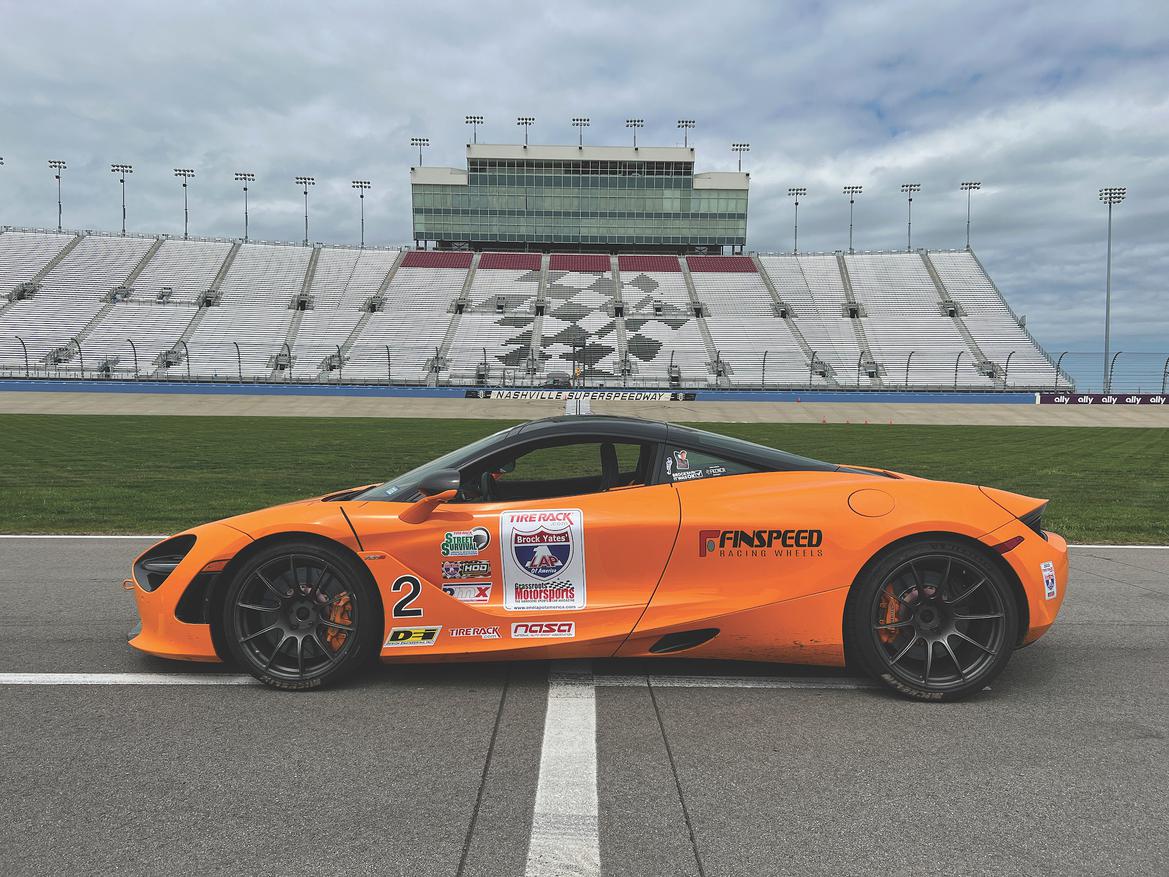We hear it all the time: What’s the widest tire I can fit under my car? Bigger is always better, right?
Not necessarily. From a performance standpoint, what matters more than tire width is optimal wheel width to support the chosen tire size. But don’t take our word for it. Let’s look at some data from our many years of tire testing.

What made our CRX faster: wider tires or wider wheels?
One of our tire testing mules, the One Lap CRX, can use a staggered wheel fitment: 15x9-inch wheels up front and 15x8-inch wheels in the rear.
But we also have several sets of each of those wheels, so it’s easy to run a variety of front wheel and tire sizes for comparison. And since our front-drive machine achieves most of its grip work with the front wheels, it’s easy to quantify the effects of these different setups merely by swapping out the fronts.
Let’s look at some data from a test we did at Harris Hill Raceway using the BFGoodrich g-Force Rival in two sizes mounted on two different front wheel widths. Both tire sizes have the same overall diameter, so gearing is unchanged. And the wheels share the same ET36 offset, so track width also remains constant.

We can see that going from a 205mm to a 225mm tire on the same-width wheels delivered no better lap times. But mount that 225mm tire on a wider wheel, and suddenly the car has more grip everywhere, circulating a solid half-second quicker.
Still not a believer in properly matched wheels? Here’s some data collected when testing the Maxxis VR-1 200tw street tire, again at Harris Hill.


Before hitting the One Lap of America, first a major investment: the right wheels. Photography Credit: Tom Suddard
We’ve also tested this concept on our more recent One Lap of America ride, a McLaren 720S. As a mid-engine, rear-drive machine, this car comes from the factory with taller, wider rear wheels.
But there’s still room for improvement with wider wheels on both ends. Custom forged wheelmaker Finspeed made us a set that’s 1 inch wider front and rear. Here’s some Harris Hill data comparing Michelin Pilot Sport 4S tires on the OE wheels versus the same tires on the Finspeeds.

Notice a trend? For optimal on-track performance, we have seen faster laps with the wider wheels.
This also usually equates to about half an inch wider than the measured tread width, but it can vary a bit due to the variety of tread crown profiles and the lack of standards for this dimension. Given that wheels don’t always come in half-inch width increments, going up to the next full inch graduation is sometimes required.
One exception to our rule of thumb comes in the form of Hoosier. Its A7 and R7 DOT R-comps are quasi-street-legal but have the construction and dimensions of a race tire. The super-stiff sidewalls don’t need as much support from a wide wheel as most real street tires. Despite that, there are gains to be had–just not as large.
Here’s some data from a recent DOT R-comp test. Note that Hoosiers also run very wide for their marked size. These 205s have more tread width than the 225 street tires in the test referenced earlier. As a result, the listed rim width range is a red herring in this case. These 205 marked tires fit just fine on a 9-inch-wide wheel and outpace the 8-inch-wide wheels by 0.3 second.

Of course, motorsports rules can get in the way of optimizing performance. Wheel widths are often restricted, either directly by dimension or indirectly through a maximum mounted tire width template. Sometimes the opposite is true, where the tire size is restricted but not the wheel width.
On our Triple Threat Miata project car, we once ran into a situation where a narrower tire was faster due to a wheel width rule. We originally kept our ND-chassis Miata rules-compliant for SCCA C Street autocross, which also translated to legality for the SCCA Time Trials Sport category.
That meant 7-inch-wide wheels, but the rules allowed us to go up or down by an inch in diameter if desired. For autocross use, we needed a tall tire to reduce shifting, so we chose a 225/45R17. With a 7.9-inch tread width, that tire really wanted a much wider rim, and a tall 205 would likely have been just as fast. Unfortunately, suitable tires aren’t made in that size.
For the track, however, a shorter tire is usually an advantage since it delivers better acceleration in all gears. We chose a 205/45R16 and found a full second over the taller, wider 225s. In addition to the gearing advantage, the wheel-and-tire combination was a full 24 pounds lighter in rotating mass and lowered the car’s center of gravity by almost an inch.


Could going smaller in wheel diameter also help? The data reveals the answer.
One final data point using the Triple Threat ND: What about bigger wheels and bigger tires?
When we finally gave up on C Street autocross and focused on a direct Sport 5 build for Time Trial competition, we mounted the widest wheels and tires that would fit on the car–245/40R17 tires on 17x9-inch wheel–and found even more time. We did give up some acceleration due to gearing and weight, but we carried way more speed through each corner, netting a solid 0.7-second improvement.

The next time you find yourself wanting to better fill out those fenders, first look at your wheels. Are you maximizing the tires you have?
If not, first try a wider wheel fitment. If so, do you have room to add both more tire and more wheel? That’s the ultimate upgrade.
And if rules get in your way, get creative and optimize what you can while still staying compliant. Width is key, but so is gearing and weight.










































